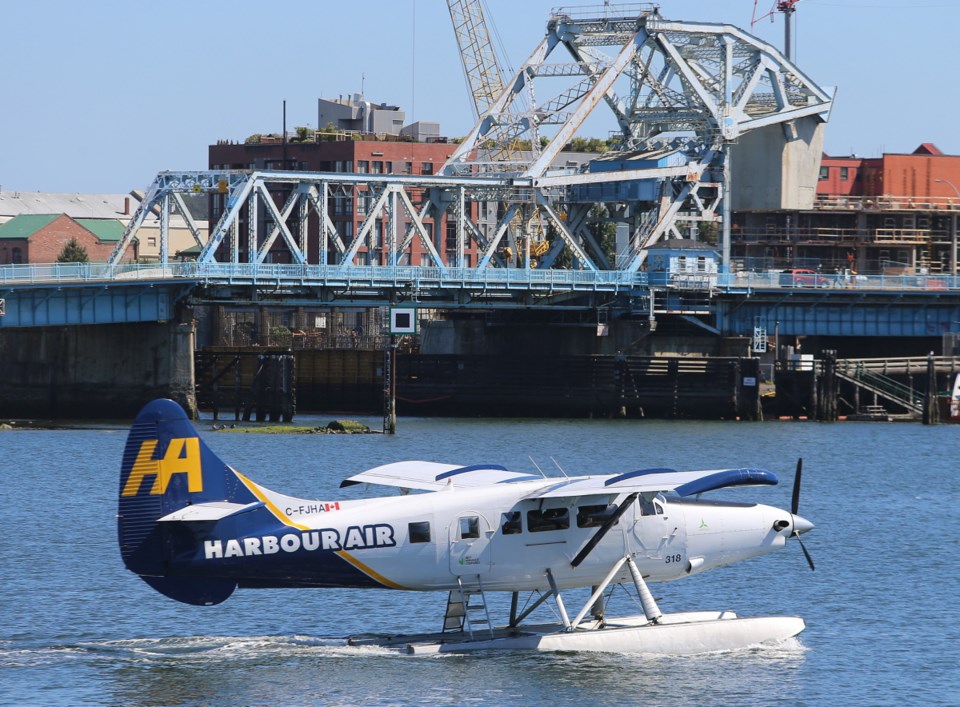Harbour Air passengers interviewed Tuesday said they back the idea of having to wear inflatable life vests while flying on floatplanes.
Mike Hayden said it seems like a logical thing to do. “For me, personally, I would think that it would almost be necessary,” he said. “The majority of the flight would obviously be [landing] on and taking off of water, with most of the impact being into the water.”
As she arrived for a Tuesday flight, Joyce Levy also backed the proposal. “It seems extremely sensible,” she said.
Levy said a personal flotation device would likely be the first thing a passenger would want if a floatplane went down. She said she doesn’t think wearing a PFD would be an inconvenience.
Commercial seaplane operators are now required to provide a flotation device for each passenger on board any aircraft that takes off or lands on water, but under proposed regulatory changes, all passengers and crew would be required to wear the device when boarding the aircraft and while it operates on or over water, said Transport Canada spokeswoman Natasha Gauthier.
The government proposal was published in the Canada Gazette on May 21, and the public can comment within 30 days. The changes could then be finalized.
Harbour Air chief executive Greg McDougall said the company has a long record of safe travel and is assessing the federal government proposal. The company currently places PFDs in an accessible area underneath or adjacent to all passengers’ seats, he said.
McDougall said in a statement Tuesday that Harbour Air — which includes Whistler Air and Salt Spring Air — has received details of the plan put forward by Minister of Transport Marc Garneau, and will continue to work with the government to develop a PFD protocol “that is logistically suitable to our high-volume commuter-seaplane airline.”
The company transports thousands of people on a daily basis, he said, adding Harbour Air has been a leader in mandatory exit training for pilots and the use of such things as pop-out windows in the event of an emergency.
The proposal for PFDs came in response to recommendations from the Transportation Safety Board, Gauthier said. Having all passengers wear PFDs was among TSB recommendations stemming from a 2009 crash of a Seair floatplane off Saturna Island in which six passengers died.
The pilot and one passenger survived after the floatplane stalled on takeoff in Saturna’s Lyall Harbour.
Gauthier said the new regulations provide flexibility by allowing operators to use more modern, practical and durable devices designed for constant wear.
Operators could also continue to use their existing approved flotation devices, she said. “Seaplane operators with more frequent flights may opt to buy new flotation devices that better suit their operations.”



